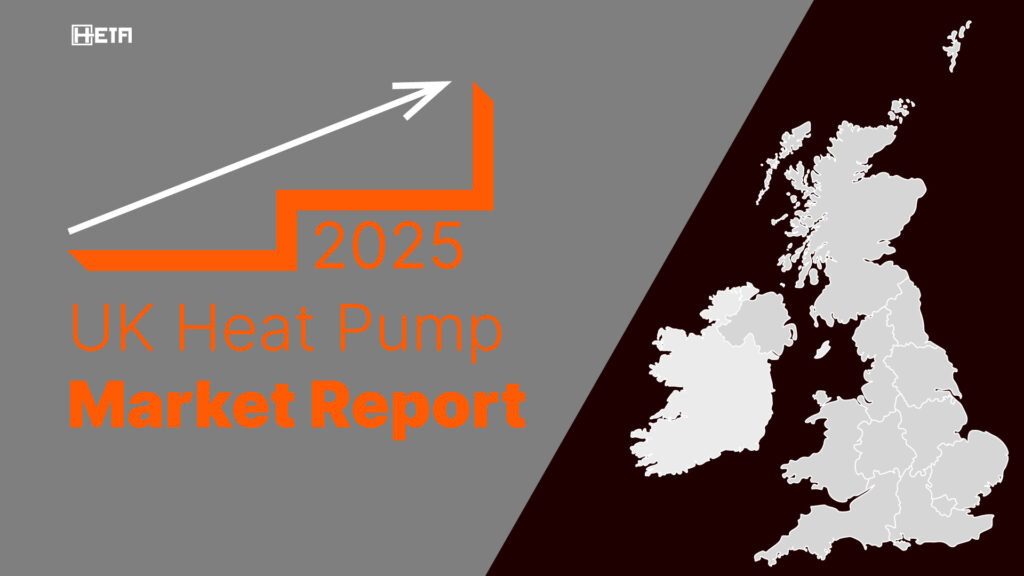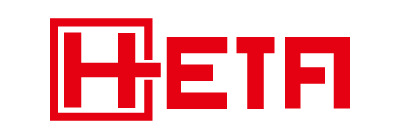
Πίνακας περιεχομένων
Προεπισκόπηση InstallerSHOW 2025
Η InstallerSHOW 2025 πραγματοποιείται στο NEC Birmingham στις 24-25 Ιουνίου 2025, συγκεντρώνοντας πάνω από 10.000 επαγγελματίες θέρμανσης, υδραυλικών και ανανεώσιμων πηγών ενέργειας από όλο το Ηνωμένο Βασίλειο και την Ευρώπη. Με 300+ εκθέτες που παρουσιάζουν την τελευταία λέξη της τεχνολογίας HVAC, η InstallerSHOW είναι το ιδανικό φόρουμ για να εξερευνήσετε καινοτομίες - όπως προηγμένες αντλίες θερμότητας με πηγή αέρα και εδάφους - και να δικτυωθείτε με βασικούς κατασκευαστές, εγκαταστάτες και ειδικούς πολιτικής που οδηγούν τη μετάβαση του Ηνωμένου Βασιλείου σε θέρμανση χαμηλών εκπομπών άνθρακα.
Η δυναμική της πολιτικής ενισχύει την εμπιστοσύνη της αγοράς
Με την κυβέρνηση του Ηνωμένου Βασιλείου να επιβεβαιώνει πρόσφατα ότι η επερχόμενη Πρότυπο Future Homes—που πρόκειται να κυκλοφορήσει το φθινόπωρο του 2025—θα επιβάλει τη χρήση συστημάτων θέρμανσης χαμηλών εκπομπών άνθρακα, όπως αντλίες θερμότητας και τηλεθέρμανση, σε όλα τα νέα σπίτια, ενώ η δυναμική πίσω από τον τομέα των αντλιών θερμότητας συνεχίζει να αυξάνεται. Αξίζει να σημειωθεί ότι οι αναθεωρημένοι κανονισμοί θα μειώσουν τους περιορισμούς σχεδιασμού, θα επιτρέψουν μεγαλύτερη ευελιξία στο μέγεθος και την τοποθέτηση του συστήματος και θα υποστηρίξουν επίσημα τις αντλίες θερμότητας με πηγή αέρα με ενσωματωμένη ψύξη. Ενώ τα όρια θορύβου θα εξακολουθούν να διέπονται από τα πρότυπα MCS, η συνολική μετατόπιση είναι σαφής: οι απλοποιημένοι κανόνες και οι υψηλότερες προσδοκίες ενεργειακής απόδοσης δημιουργούν ένα γόνιμο περιβάλλον για ανάπτυξη. Σε αυτό το πλαίσιο, οι επαγγελματίες του κλάδου που συμμετέχουν στην InstallerSHOW 2025—είτε κατασκευαστές, διανομείς είτε εγκαταστάτες— μπορούν να περιμένουν πολύτιμες ευκαιρίες για να συνδεθούν, να μάθουν και να αναπτυχθούν σύμφωνα με αυτές τις εθνικές φιλοδοξίες.
Στρατηγική Μηδενικού Καθαρού Ιστού του Ηνωμένου Βασιλείου (Στόχος και Πρόοδος 2050)
Το Ηνωμένο Βασίλειο έχει έναν νομικά δεσμευτικό στόχο που πρέπει να επιτύχει μηδενικές εκπομπές αερίων του θερμοκηπίου έως το 2050Οι ενδιάμεσοι στόχοι περιλαμβάνουν μείωση των εκπομπών κατά 68% έως το 2030 (σε σύγκριση με το 1990) και έναν Έκτο Προϋπολογισμό Άνθρακα (μείωση 78% έως το 2037). Στην πράξη, η απαλλαγή από τον άνθρακα από τη θερμότητα είναι κρίσιμη: η θέρμανση αντιπροσώπευε περίπου 22% των εκπομπών του Ηνωμένου Βασιλείου το 2022. Η κυβέρνηση... Στρατηγική Μηδενικού Καθαρού Ισχύος (2021) και Σχέδιο Μηδενικής Καθαρής Ανάπτυξης (2023) καθόρισαν πολιτικές για την απαλλαγή από τον άνθρακα στην ενέργεια, τη θερμότητα, τις μεταφορές κ.λπ. Πρόσφατες εκθέσεις προόδου της CCC σημειώνουν ότι ενώ οι εκπομπές στον τομέα της ενέργειας μειώνονται με ταχείς ρυθμούς, η θέρμανση και οι μεταφορές πρέπει να επιταχυνθούν για την επίτευξη των στόχων. Συγκεκριμένα, η ανάπτυξη θέρμανσης χαμηλών εκπομπών άνθρακα (π.χ. αντλίες θερμότητας) σε κτίρια θεωρείται απαραίτητη στο πλαίσιο της Στρατηγικής Μηδενικών Καθαρών Εκπομπών.
Κυβερνητικές Πολιτικές και Κίνητρα
Η κυβέρνηση του Ηνωμένου Βασιλείου έχει εισαγάγει διάφορα προγράμματα για την τόνωση της υιοθέτησης αντλιών θερμότητας:
- Σχέδιο Αναβάθμισης Λέβητα (BUS): Η BUS, η οποία ξεκίνησε τον Μάιο του 2022, προσφέρει επιχορηγήσεις για την αντικατάσταση λεβήτων ορυκτών καυσίμων με θέρμανση από ανανεώσιμες πηγές ενέργειας. Για παράδειγμα, έως 7.500 £ είναι διαθέσιμο για την εγκατάσταση αντλίας θερμότητας με πηγή αέρα ή εδάφους σε μια κατοικία. (Αρχικά 5.000 λίρες, η επιχορήγηση αυξήθηκε σε 7,5.000 λίρες στα τέλη του 2024 για την ενίσχυση της απορρόφησης.) Το πρόγραμμα καλύπτει την Αγγλία και την Ουαλία (με ισοδύναμη υποστήριξη μέσω της Home Energy Scotland στη Σκωτία). Το BUS είναι ανοιχτό σε ιδιοκτήτες-ενοικιαστές και μικρούς μη οικιακούς πελάτες, με την επιφύλαξη βασικών κριτηρίων ενεργειακής απόδοσης (έγκυρο ΠΕΑ κ.λπ.). Κατά τα πρώτα τρία χρόνια, το BUS χρηματοδοτήθηκε με 450 εκατομμύρια λίρες, αν και η αρχική απορρόφηση υστερούσε και παραμένει κάτω από τους στόχους.
- ECO4 και σχετικά προγράμματα: Η Υποχρέωση της Εταιρείας Ενέργειας (ECO4, 2022–26) υποχρεώνει τους προμηθευτές ενέργειας να χρηματοδοτούν αναβαθμίσεις απόδοσης και θέρμανσης σε κατοικίες χαμηλού εισοδήματος, συμπεριλαμβανομένης της μόνωσης και της θέρμανσης από ανανεώσιμες πηγές. Η κυβέρνηση έχει επίσης εισαγάγει τοπικές επιχορηγήσεις ανακαίνισης (π.χ. το Great British Insulation Scheme, Home Upgrade Grant) που στοχεύουν σε κατοικίες χωρίς φυσικό αέριο και σε κατοικίες που είναι δύσκολο να αντιμετωπιστούν. Αυτά τα προγράμματα μπορούν να συμπληρώσουν την BUS χρηματοδοτώντας μόνωση ή μερικές αναβαθμίσεις του συστήματος θέρμανσης.
- Ελάφρυνση ΦΠΑ: Η κυβέρνηση έχει μειώσει τον ΦΠΑ σε 0% σε πολλές εγκαταστάσεις θέρμανσης από ανανεώσιμες πηγές ενέργειας (συμπεριλαμβανομένων των σταθερών αντλιών θερμότητας αέρα και εδάφους) έως τον Μάρτιο του 2027, μειώνοντας το αρχικό κόστος.
- Άλλη υποστήριξη: Τα προγράμματα κατάρτισης και πιστοποίησης (π.χ. Heat Training Grant) στοχεύουν στην επέκταση του εργατικού δυναμικού των εγκαταστατών. Η απαλλαγή από τον φόρο κλιματικής αλλαγής (SCRiBE) για τις αντλίες θερμότητας καταργήθηκε το 2021, αλλά η κυβέρνηση εξετάζει νέους μηχανισμούς αγοράς (όπως τον Μηχανισμό Αγοράς Καθαρής Θερμότητας) για την αύξηση της απόδοσης του κλάδου.
Συνολικά, αυτές οι πολιτικές επιδιώκουν να αντιμετωπίστε τα κύρια εμπόδια (υψηλό αρχικό κόστος και καθυστερήσεις στην εγκατάσταση) προσφέροντας επιχορηγήσεις και υποστήριξη. Για παράδειγμα, μια έρευνα του Μαρτίου 2025 διαπίστωσε ότι το αυξανόμενο κόστος και η σύγχυση σχετικά με τις επιχορηγήσεις αποτελούν σημαντικά εμπόδια. Οι επιχορηγήσεις BUS και ECO έχουν αρχίσει να μετατοπίζουν την οικονομική κατάσταση, αλλά πολλοί αναλυτές εξακολουθούν να επισημαίνουν το κόστος ως βασικό εμπόδιο υιοθέτησης.
Πρόσφατες Ρυθμιστικές Αλλαγές (Πρότυπο Μελλοντικών Κατοικιών, Σχεδιασμός, MCS)
Η κυβέρνηση του Ηνωμένου Βασιλείου θεσπίζει νέους κανονισμούς για την επιτάχυνση της ανάπτυξης αντλιών θερμότητας:
- Πρότυπο για τα Σπίτια του Μέλλοντος (2025): Οι νέοι οικοδομικοί κανονισμοί θα απαγορεύσουν ουσιαστικά τους λέβητες αερίου σε νέες κατοικίες από το 2025. Όλες οι νέες κατοικίες στο Ηνωμένο Βασίλειο πρέπει να εκπέμπουν ~75–80% λιγότερες εκπομπές άνθρακα (σε σύγκριση με τους ισχύοντες κανονισμούς). Αυτό σημαίνει ότι οι νέες κατασκευές πρέπει να περιλαμβάνουν θέρμανση χαμηλών εκπομπών άνθρακα (όπως αντλίες θερμότητας ή δίκτυα θέρμανσης) και συνήθως επιτόπιες ανανεώσιμες πηγές ενέργειας όπως η ηλιακή ενέργεια σε στέγες. Για παράδειγμα, ο προϋπολογισμός των Εργατικών για το 2025 ανακοίνωσε ότι «Σχεδόν όλα τα νέα σπίτια θα πρέπει να κατασκευαστούν με ηλιακή ενέργεια στις στέγες, θέρμανση υψηλής απόδοσης και χαμηλών εκπομπών άνθρακα (όπως αντλίες θερμότητας)».
- Επιτρεπόμενα Δικαιώματα Ανάπτυξης (αλλαγές Ιουνίου 2025): Από την 1η Ιουνίου 2025, οι κανόνες για την εγκατάσταση οικιακών αντλιών θερμότητας χαλάρωσαν. Ο κανόνας ορίου 1 μέτρου έχει... αφαιρέθηκε, έτσι ώστε οι μονάδες πηγής αέρα να μπορούν να τοποθετηθούν σε απόσταση 1 μέτρου από τα όρια ενός ακινήτου χωρίς άδεια πολεοδομίας. Ο επιτρεπόμενος όγκος μονάδας για κατοικίες έχει αυξηθεί από 0,6m³ σε 1,5m³. Οι μονοκατοικίες μπορούν πλέον να εγκατασταθούν έως δύο μονάδες βάσει δικαιωμάτων PD. Σημαντικό είναι ότι οι αντλίες θερμότητας αέρα-αέρα (μονάδες που παρέχουν τόσο θέρμανση όσο και ψύξη) υποστηρίζονται ρητά, αντανακλώντας την αυξανόμενη ζήτηση για ψύξη το καλοκαίρι. Όλες οι εγκαταστάσεις βάσει PD πρέπει να εξακολουθούν να πληρούν τις προϋποθέσεις. Πρότυπα Σχεδιασμού MCS 020 (καλύπτοντας την χωροθέτηση, τον θόρυβο κ.λπ.).
- Πρότυπα θορύβου και MCS: Το Σχήμα Πιστοποίησης Μικροπαραγωγής (MCS) έχει ενημερώσει τα πρότυπα εγκατάστασης. Ένα νέο πρότυπο MCS 020(a) (σε ισχύ από τον Μάρτιο του 2025) αυστηροποιεί τα όρια θορύβου: ο μέγιστος επιτρεπόμενος ήχος στα όρια ενός γείτονα μειώνεται (από 42 dB σε 37 dB LAeq) και οι εγκαταστάτες πρέπει να χρησιμοποιούν μοντελοποίηση βάσει ηχητικής ισχύος. Αυτές οι αλλαγές σημαίνουν ότι απαιτείται πιο αθόρυβος εξοπλισμός και προσεκτική τοποθέτηση. (Σημείωση: οι επίσημες οδηγίες εξακολουθούν να απαιτούν συμμόρφωση με τους ενημερωμένους κανόνες MCS 020.)
- Άλλα ρυθμιστικά σήματα: Οι κανονισμοί κτιρίων βρίσκονται επίσης υπό αναθεώρηση για την ενεργειακή απόδοση και την ενσωμάτωση στο δίκτυο. Το Ηνωμένο Βασίλειο εξετάζει τις απαιτήσεις για σχέδια κτιρίων έτοιμα για αντλίες θερμότητας, έξυπνους ελέγχους και ενσωμάτωση με ηλιακή ενέργεια/μπαταρία, αν και λεπτομερείς κανόνες παραμένουν υπό ανάπτυξη. (Για παράδειγμα, η διαβούλευση της Αγγλίας σχετικά με την ενίσχυση των προτύπων προϊόντων για τις αντλίες θερμότητας βρίσκεται σε εξέλιξη.)
Συνοψίζοντας, η πρόσφατη πολιτική έχει και τα δύο «σπρώχνω» και «τραβάω» Επιπτώσεις: Τα κίνητρα (BUS, ECO, ΦΠΑ) ωθούν τους καταναλωτές προς τις αντλίες θερμότητας, ενώ οι νέοι κανονισμοί και οι ελευθερίες σχεδιασμού ωθούν την αγορά επιβάλλοντας θέρμανση με χαμηλότερες εκπομπές άνθρακα και απλοποιώντας τους κανόνες εγκατάστασης.
Επισκόπηση Αγοράς – Εγκατεστημένη Βάση και Ανάπτυξη
Εξωτερική αντλία θερμότητας με πηγή αέρα εγκατεστημένη σε κατοικία στο Ηνωμένο Βασίλειο. Η ανάπτυξη αντλιών θερμότητας στο Ηνωμένο Βασίλειο επιταχύνεται από χαμηλή βάση. Σύμφωνα με επίσημα στοιχεία και στοιχεία του κλάδου, οι ετήσιες εγκαταστάσεις αυξάνονται ραγδαίαΤο πρώτο τρίμηνο του 2025, το Ηνωμένο Βασίλειο σημείωσε περίπου 15,758 εγκαταστάσεις πιστοποιημένων αντλιών θερμότητας – το υψηλότερο σύνολο πρώτου τριμήνου που έχει καταγραφεί ποτέ (αύξηση 22% σε σχέση με το πρώτο τρίμηνο του 2024). Για ολόκληρο το 2024, το σύνολο με πιστοποίηση MCS ήταν 58,176 μονάδες, ένα νέο ετήσιο ρεκόρ. Αυτά τα πιστοποιημένα στοιχεία αντικατοπτρίζουν μόνο εγκαταστάσεις που έχουν καταγραφεί στο Σύστημα Πιστοποίησης Μικροπαραγωγής. Οι έρευνες του κλάδου δείχνουν ότι οι συνολικές πωλήσεις αντλιών θερμότητας (συμπεριλαμβανομένων των μη πιστοποιημένων) ήταν ακόμη υψηλότερες. Η Ένωση Αντλιών Θερμότητας (HPA) αναφέρει 98,469 πωλήθηκαν υδρονικές αντλίες θερμότητας το 2024 (αύξηση 63% από το 2023).
Παρά την ισχυρή πρόσφατη ανάπτυξη, οι αντλίες θερμότητας η διείσδυση στην αγορά παραμένει πολύ χαμηλήΤο σύνολο των πιστοποιημένων εγκαταστάσεων έχει πλέον «ξεπεράσει τις 200.000» από τότε που ξεκίνησε η παρακολούθηση – της τάξης των 0,6–0,7% των νοικοκυριών του Ηνωμένου Βασιλείου. Μια πρόσφατη έρευνα εγκαταστατών διαπίστωσε ότι 60% του 2024 εγκαταστάσεις αντλιών θερμότητας πιστοποιήθηκαν από την MCS, γεγονός που υποδηλώνει συνολικές πωλήσεις πολύ κάτω από 100.000 ετησίως. Συγκριτικά, οι κορυφαίες ευρωπαϊκές αγορές εγκαθιστούν τάξεις μεγέθους περισσότερες κάθε χρόνο. Με άλλα λόγια, το Ηνωμένο Βασίλειο βρίσκεται ακόμη στα πολύ πρώιμα στάδια της ηλεκτροδότησης της θέρμανσης.
Παρ 'όλα αυτά, η ανάπτυξη αποκτά δυναμική. Μετά από μια μέτρια αύξηση 4% το 2023, η απότομη αύξηση των εγκαταστάσεων το 2024-25 αντανακλά έναν συνδυασμό μεγαλύτερης επιδότησης, ευρύτερης διαθεσιμότητας προϊόντων και κανονιστικής υποστήριξης. Η κατανομή των εγκατεστημένων μονάδων είναι σε μεγάλο βαθμό ασύμμετρη: οι αντλίες θερμότητας με πηγή αέρα κυριαρχούν (≈98%) ενώ τα συστήματα εδάφους αποτελούν ένα μικρό μερίδιο. Η πλειονότητα των αντλιών θερμότητας στο Ηνωμένο Βασίλειο είναι πλέον μονάδες αέρα-νερού split-systems που εγκαθίστανται σε κατοικίες ή μικρές επιχειρήσεις.
Τάσεις υιοθέτησης από τους καταναλωτές: Οι έρευνες και τα σχόλια του κλάδου δείχνουν ότι οι περισσότεροι νέοι αγοραστές αντλιών θερμότητας έχουν παρακινηθεί είτε από τις απαιτήσεις για νέες κατασκευές είτε από τη διαθεσιμότητα επιχορηγήσεων σε έργα ανακαίνισης. Για τα υπάρχοντα σπίτια, η αποδοχή είναι ισχυρότερη όπου οι λέβητες αερίου αντικαθίστανται παράλληλα με τις αναβαθμίσεις μόνωσης. Ωστόσο, η επίγνωση παραμένει χαμηλή: διαπίστωσε μια έρευνα εγκαταστατών του 2024. «72% καταναλωτών» λανθασμένα πιστεύεται ότι οι αντλίες θερμότητας λειτουργούν μόνο σε καινούργια ή καλά μονωμένα σπίτια, και οι 64% πιστεύουν ότι είναι πολύ ακριβές στη λειτουργία τους. Οι ανησυχίες για τον θόρυβο και τον χώρο αποθαρρύνουν επίσης ορισμένους αγοραστές (περίπου οι 49% επεσήμαναν τον θόρυβο ως ανησυχία). Ο κλάδος αντιμετωπίζει αυτές τις τάσεις δίνοντας έμφαση σε μελέτες περιπτώσεων πραγματικού κόσμου και στην μακροπρόθεσμη εξοικονόμηση κόστους καυσίμων από τις αντλίες θερμότητας.
Ανταγωνιστικό Τοπίο – Κύριοι Παίκτες
Η αγορά αντλιών θερμότητας του Ηνωμένου Βασιλείου εξυπηρετείται από ένα μείγμα παγκόσμιων κατασκευαστών πρωτότυπου εξοπλισμού (OEM) και τοπικών εμπορικών σημάτων. Σύμφωνα με την HPA, τα μέλη της (τα οποία περιλαμβάνουν πάνω από 100 κατασκευαστές και προμηθευτές) αντιπροσωπεύει περίπου 90% του όγκου αντλιών θερμότητας στο Ηνωμένο Βασίλειο. Στις μεγάλες διεθνείς εταιρείες που δραστηριοποιούνται στο Ηνωμένο Βασίλειο περιλαμβάνονται Daikin, Mitsubishi Electric/Heavy Industries, NIBE (Σουηδία), Viessmann (Γερμανία), Vaillant (Γερμανία, συμπεριλαμβανομένης της Worcester Bosch στο Ηνωμένο Βασίλειο), Bosch (Γερμανία), Panasonic, Samsung, μεταξύ άλλων. Αυτές οι εταιρείες (και τα δίκτυα διανομής τους) προμηθεύουν τη συντριπτική πλειοψηφία των οικιακών και ελαφρών επαγγελματικών αντλιών θερμότητας. (Για τις αντλίες εδάφους, βρετανικές εταιρείες όπως Κένσα και Accsys είναι επίσης αξιοσημείωτα.)
Από την πλευρά των προμηθευτών, οι εξειδικευμένοι χονδρέμποροι HVAC και υδραυλικών διαθέτουν πολλαπλές μάρκες. Ένας αυξανόμενος αριθμός ανεξάρτητων εγκαταστατών και μεγάλων εταιρειών ενέργειας (π.χ. Octopus Energy, EDF, British Gas) συσκευάζουν συστήματα αντλιών θερμότητας και υπηρεσίες εγκατάστασης, συχνά σε συνεργασία με κατασκευαστές. Η αγορά παραμένει συγκεντρωμένη. Για παράδειγμα, τα στοιχεία της HPA δείχνουν ότι μια χούφτα μεγάλων κατασκευαστών κυριαρχούν στις πωλήσεις του Ηνωμένου Βασιλείου (τα μέλη της HPA αντιπροσωπεύουν 90% όγκου). Καθώς η ζήτηση αυξάνεται, ο ανταγωνισμός εντείνεται σε τομείς όπως η καινοτομία προϊόντων (μονάδες υψηλότερου COP, υβριδικά συστήματα) και η μείωση του κόστους.
Προκλήσεις της αγοράς και μελλοντικές ευκαιρίες
Προκλήσεις: Η μετάβαση στις αντλίες θερμότητας αντιμετωπίζει αρκετά εμπόδια:
- Υψηλό αρχικό κόστος: Ακόμα και με επιχορηγήσεις, ένα σύστημα αντλίας θερμότητας (μονάδα + εγκατάσταση) είναι συνήθως 2-3 φορές πιο ακριβό από έναν λέβητα αερίου. Πολλοί καταναλωτές εξακολουθούν να αποθαρρύνονται από την υψηλή αρχική επένδυση. Η σύγχυση σχετικά με τις επιδοτήσεις μπορεί να επιδεινώσει την κατάσταση. Έρευνες διαπιστώνουν ότι οι ιδιοκτήτες σπιτιών συχνά υποτιμούν τις επιλέξιμες επιχορηγήσεις ή υπερεκτιμούν το κόστος λειτουργίας.
- Διαθεσιμότητα και δεξιότητες εγκαταστάτη: Υπάρχει έλλειψη εξειδικευμένων εγκαταστατών αντλιών θερμότητας στο Ηνωμένο Βασίλειο. Μια έρευνα του 2024 διαπίστωσε ότι οι εγκαταστάτες συχνά δεν έχουν πρακτική εμπειρία στις αντλίες θερμότητας και 351,3 χιλιάδες εγκαταστάσεις αναφέρονται ως υπερμεγέθεις λόγω κακής εμπειρογνωμοσύνης στο μέγεθος. Η επέκταση του αγωγού εκπαίδευσης (μέσω επιχορηγήσεων και μαθητειών) βρίσκεται σε εξέλιξη, αλλά το εργατικό δυναμικό δεν είναι ακόμη αρκετά μεγάλο για να ανταποκριθεί στην αναμενόμενη αύξηση. Η HPA σημειώνει ότι περίπου 9.000 άτομα ολοκλήρωσαν ένα εκπαιδευτικό πρόγραμμα για αντλίες θερμότητας το 2024 (αύξηση 151,3 χιλιάδων), αλλά απαιτείται πολύ ταχύτερη αύξηση των εγκαταστατών.
- Ρυθμιστικά και αδειοδοτικά εμπόδια (θόρυβος/χώρος): Ο πολεοδομικός σχεδιασμός και οι κανονισμοί για τον θόρυβο έχουν ιστορικά περιορίσει την ανάπτυξη αντλιών θερμότητας (π.χ. ο παλιός κανόνας ορίου 1 μέτρου). Παρόλο που οι πρόσφατες αλλαγές αντιμετωπίζουν πολλά ζητήματα (βλ. παραπάνω), τα τοπικά συμβούλια εξακολουθούν να ελέγχουν τις εγκαταστάσεις για θόρυβο. Οι κατασκευαστές συνεχίζουν να βελτιώνουν τα μοντέλα χαμηλού θορύβου για να πληρούν τα αυστηρότερα όρια MCS. Οι περιορισμοί χώρου σε μικρά σπίτια (εύρεση χώρου για κυλίνδρους ή πολλαπλές μονάδες) αποτελούν επίσης μια πρακτική πρόκληση σε ορισμένες ανακαινίσεις.
- Αντιλήψεις καταναλωτών: Όπως σημειώθηκε, οι παρανοήσεις σχετικά με την απόδοση και το κόστος παραμένουν ευρέως διαδεδομένες. Η οικοδόμηση της εμπιστοσύνης των καταναλωτών απαιτεί εκπαίδευση και έργα επίδειξης. Μέχρι να αυξηθεί η υιοθέτηση, η έλλειψη «κοινωνικής απόδειξης» μπορεί να επιβραδύνει την υιοθέτηση από στόμα σε στόμα.
Μελλοντικές ευκαιρίες: Παρά τις προκλήσεις αυτές, αρκετοί παράγοντες υπόσχονται ισχυρή μελλοντική ανάπτυξη:
- Απανθρακοποίηση του δικτύου: Καθώς το ηλεκτρικό δίκτυο του Ηνωμένου Βασιλείου συνεχίζει να προσθέτει ανανεώσιμες πηγές ενέργειας (ηλιακή, αιολική, πυρηνική), η πραγματική ένταση άνθρακα της ηλεκτρικής θέρμανσης θα μειωθεί. Αυτό ενισχύει τα επιχειρήματα υπέρ των αντλιών θερμότητας ως συστημάτων μηδενικών εκπομπών άνθρακα στο σημείο χρήσης. Οι καταναλωτές και οι επιχειρήσεις εκτιμούν ολοένα και περισσότερο τη μακροπρόθεσμη εξοικονόμηση άνθρακα παράλληλα με την ανταγωνιστικότητα του κόστους λειτουργίας.
- Διαχείριση αιχμής ζήτησης και έξυπνη ενσωμάτωση: Οι αντλίες θερμότητας μπορούν να συνδυαστούν με έξυπνα χειριστήρια, τιμολόγια χρόνου χρήσης και αποθήκευση ενέργειας για να ευθυγραμμιστούν με την παραγωγή ανανεώσιμων πηγών ενέργειας (π.χ. θέρμανση νερού όταν η αιολική ισχύς είναι υψηλή). Αυτή η συνέργεια μπορεί να προσφέρει ανακούφιση από το δίκτυο κατά τις περιόδους αιχμής και χαμηλότερους λογαριασμούς για τους χρήστες. Με την πάροδο του χρόνου, κίνητρα σε επίπεδο δικτύου θα μπορούσαν να ανταμείψουν τις αντλίες θερμότητας για υπηρεσίες ευελιξίας ζήτησης.
- Αυξανόμενη ζήτηση ψύξης: Οι κλιματικές τάσεις και οι ανάγκες άνεσης σε εσωτερικούς χώρους καθιστούν την ψύξη πιο σημαντική. Οι αντλίες θερμότητας που μπορούν να θερμαίνουν και να ψύχουν (μονάδες αέρα-αέρα) εξυπηρετούν διπλό σκοπό. Τα νέα δικαιώματα ιδιοκτησίας υποστηρίζουν ρητά τα συστήματα αέρα-αέρα. Καθώς οι καύσωνες αυξάνονται, η αγορά για αναστρέψιμες μονάδες σε κατοικίες και επιχειρήσεις αναμένεται να επεκταθεί, δημιουργώντας ένα νέο τμήμα στις πωλήσεις αντλιών θερμότητας.
- Οικονομίες κλίμακας και καινοτομία: Η συνεχιζόμενη ανάπτυξη της αγοράς θα βοηθήσει στη μείωση του κόστους. Οι στόχοι της κυβέρνησης και της βιομηχανίας αποσκοπούν στη μείωση κατά το ήμισυ των τιμών των αντλιών θερμότητας έως το 2025 (σε σύγκριση με το 2020) και στην επίτευξη ισοτιμίας τιμών με τους λέβητες έως το 2030. Υπάρχει ενεργή καινοτομία στη μείωση των μεγεθών πλήρωσης ψυκτικού μέσου, στη βελτίωση του συντελεστή απόδοσης (COP) σε κρύο καιρό και στην ανάπτυξη υβριδικών συστημάτων. Οι αγορές χύμα, οι εγχώριες επενδύσεις στην παραγωγή και οι βελτιστοποιημένες πρακτικές εγκατάστασης θα συμβάλουν στη μείωση του πραγματικού κόστους.
- Ευαισθητοποίηση του κοινού και δυναμική πολιτικής: Η ισχυρή πολιτική ώθηση (FHS, ενισχύσεις BUS, μεγάλη χρηματοδότηση ανακαίνισης) αυξάνει την ευαισθητοποίηση των καταναλωτών. Καθώς οι επιδοτήσεις συνεχίζονται και το χαμηλότερο κόστος συγκλίνει, περισσότεροι ιδιοκτήτες σπιτιών και ιδιοκτήτες ακινήτων θα δουν τις αντλίες θερμότητας ως κυρίαρχη επιλογή. Η διεθνής ορμή (Πράσινη Συμφωνία της ΕΕ, Νόμος για τη Μείωση του Πληθωρισμού των ΗΠΑ) οδηγεί επίσης σε ευρύτερη τεχνολογική ωριμότητα και ανταγωνιστικές αλυσίδες εφοδιασμού.
Συνοπτικά, ενώ το τρέχον μερίδιο αγοράς είναι μικρό, η αγορά αντλιών θερμότητας στο Ηνωμένο Βασίλειο βρίσκεται σε τροχιά ταχείας ανάπτυξης. Τα κίνητρα πολιτικής καταλύουν τη βραχυπρόθεσμη επέκταση και οι επικείμενες κανονιστικές αλλαγές υπόσχονται έναν πολύ μεγαλύτερο ρόλο για τις αντλίες θερμότητας στην επίτευξη μηδενικών εκπομπών θερμότητας. Η υπέρβαση των εναπομενόντων εμποδίων (κόστος, δυναμικότητα εγκατάστασης και εκπαίδευση των καταναλωτών) θα είναι κρίσιμης σημασίας. για να αξιοποιηθεί αυτό το δυναμικό. Ο συνδυασμός αυστηρότερων κανονισμών για τον άνθρακα, της μείωσης του κόστους τεχνολογίας και της αυξανόμενης αποδοχής από τους καταναλωτές υποδηλώνει ότι η αγορά αντλιών θερμότητας του Ηνωμένου Βασιλείου θα συνεχίσει την ισχυρή ανάπτυξή της τα επόμενα χρόνια.
Παραπομπές:
Επίσημες εκθέσεις και στατιστικά στοιχεία της βρετανικής κυβέρνησης:
commonslibrary.parliament.uk
mhclgmedia.blog.gov.uk
gov.uk;
Στοιχεία εμπορικών ενώσεων:
αντλίες θερμότητας.org.uk
mcsfoundation.org.uk;
Τύπος και ανάλυση του κλάδου:
pv-magazine.com
mhclgmedia.blog.gov.uk
acrjournal.uk.




